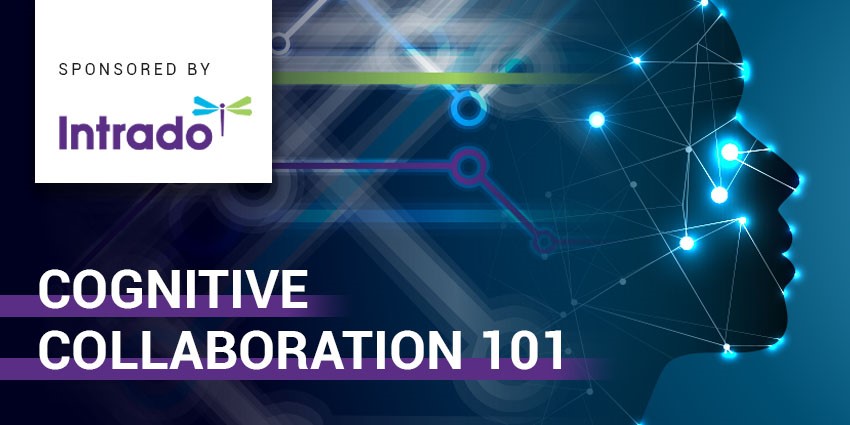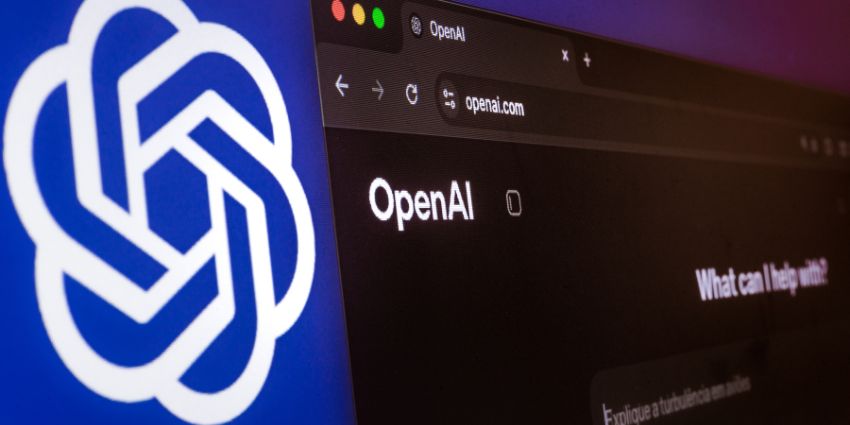Collaboration has always been a valuable part of running a successful company. However, the way that we approach collaboration has changed. In the age of digital transformation, we’re discovering that there’s more to collaboration than just keeping humans connected. We also need a way to build the relationships with have with machines, processes, and digital context too.
In a world where modern workflows are growing incredibly complex, Cisco, one of the leaders in communication and collaboration solutions, found that 95% of workers believe that they can benefit from using artificial intelligence to streamline their daily tasks. What’s more, another 53% of people in a Dimensional Research study said that smart meeting rooms would have the potential to improve business processes.
As a result, Cisco began building a way for people to start working more intelligently, both with their human peers and with their digital tools. The age of cognitive collaboration is here.
Is Cognitive Collaboration All About AI?

According to Intrado (previously West UC), companies and salespeople alike are still in the beginning stages of their new relationship with artificial intelligence. Many innovators are still missing the point of AI because they see it as some exciting new trend to be a part of, rather than part of a comprehensive solution for solving existing problems.
With its new Cognitive Collaboration strategy, Cisco aims to dive deeper into the reality of what companies can accomplish when they bring intelligence into collaboration. According to the SVP of Cisco Collaboration, Amy Chang, there’s more to cognitive collaboration than machine learning and artificial intelligence – although those are crucial factors. Instated, cognitive collaboration is about bringing context and intelligence into everyday interactions.
We know that collaboration is all about connecting people in a team so that they can work efficiently towards a specific outcome. However, cognitive collaboration makes those interactions more intelligent and streamlined. It’s about making it just as easy to have a valuable conversation and get work done, regardless of whether you’re in the same office, dispersed around the world, or on the move. Cisco is applying the idea of cognitive collaboration across every aspect of the collaboration portfolio, from meeting room hardware and software to services for messaging, telephony, and more.
Why Does Collaboration Need to Be Cognitive?
Collaboration in the cloud has become an increasingly crucial topic in the modern marketplace. As people have started to work in new and flexible ways, we’ve needed to discover more flexible, mobile tools that can support teamwork in any environment. Although progress is happening, people are still feeling frustrated with the current state of their day-to-day meetings. 85% of people according to Cisco, are frustrated by their digital meeting environments.
Cognitive collaboration is Cisco’s method of solving some of the most common problems that today’s collaborative teams face. For instance, according to Cisco’s most recent research:
- Around 30% of respondents spent up to 5 hours a week search for information about the people and companies they’re meeting with
- 50% of people say that they don’t get enough information about the people they’re connecting with online from LinkedIn
- 1 in 4 people spend more than half of their days in video and audio meetings every day
- 43% of people have felt frustrated by the inability to easily join a meeting
- One third of respondents say that they struggle to connect their devices to the screen in the meeting room
Cisco believes that the solution to problems like this isn’t just an intelligent meeting room packed full of AI. It’s an entire approach to collaboration that’s focused around “cognition.”
How Can Companies Get Started with Cognitive Collaboration?
So, how do companies get started with a new “cognitive” collaboration initiative? According to Intrado, the conversation needs to start with an insight into the problems and challenges that the company wants to overcome. Artificial Intelligence isn’t just a buzzword that companies need to embrace to be “hip” and fresh. Although AI has countless benefits to offer, those advantages can only be realised when vendors and partners know how to work backwards from an existing goal or challenge with their customer.
For instance, in a larger business environment, employees might have a hard time figuring out who to turn to for help when they’re struggling with a complex customer problem. Having the right tools in place like Cisco Webex Teams and Meeting means that the employee can reach out to a colleague quickly and conveniently, but it takes an extra dose of intelligence or “cognition” for that user to figure out which team member they need to work with.
AI-infused solutions like People Insights within the Cisco environment could solve the problem of figuring out who to connect with, and therefore streamline the collaboration experience. When users can open a tab in their meeting environment and find out what specialities and talents each member of their group has, it’s easy to figure out who to reach out to about a specific problem. Through cognitive collaboration, vendors like Cisco and partners like Intrado are going beyond the basic software and hardware of the collaborative environment, to create a mesh of intelligence that makes every interaction more efficient, and valuable.
What Are the Outcomes of Cognitive Collaboration?
People need technology that understands what’s happening in the business and can react accordingly. Cognitive collaboration is technology that can combine the best in AI with machine learning and natural language processing, to remove the guesswork and confusion from daily interactions. Cisco cognitive collaboration supports the evolution of the new workplace.
In a recent study by Cisco, the company found that 66% would happily switch vendors to get a better intelligent online meeting solution. Additionally, 70% would start using the smart solutions that they had access to immediately. More importantly:
- 87% of people see immediate value in having an online virtual meeting assistant
- 82% of people say that meeting solutions that track item actions would help them to get things done
- 88% felt that they’d be more efficient if their meeting room solutions automatically showed relevant information and action items
For Cisco, the age of cognitive collaboration begins with an overhaul of the standard meeting experience. This means that the first tool seeing the benefits of this new solution in the Cisco portfolio is Webex Meetings. Cisco believes that for companies to be more efficient and productive, they first need to transform their meeting solutions.
Part of transforming the modern meeting room solution will be implementing intelligent tools like People Insights and other opportunities for contextual and “cognitive” collaboration. However, for businesses to achieve a truly next-generation collaboration environment, they’ll also need to think about the full end-to-end environment that they’re building around internal conversations.
For instance, as well as having access to the right software and intelligence, users will also need to make sure that they have the right endpoints and hardware available to facilitate more efficient meetings. Partners like Intrado offer companies in the modern meeting environment a chance to build a cognitive collaboration environment that combines immersive Webex software, with state-of-the-art conferencing endpoints, equipment, and tools.
With the right end-to-end solution, users will be able to seek out the colleagues they need to help them with specific problems or business projects using artificial intelligence. They’ll also be able to use Webex software to connect through Teams instant messaging and Meetings for video and audio conferencing. At the same time, they’ll have the hardware they need to take those meetings to the next level with interactive whiteboards, state-of-the-art video streaming and clear audio.
With this end-to-end environment designed for the cognitive collaboration space, businesses will be able to create fully immersive moments between collaborators, regardless of where they are, or what they’re trying to accomplish.
Can Anyone Benefit from Cognitive Collaboration?
In the future, Cisco also believes that cognitive collaboration will find its way into more environments, including the contact centre. In the contact centre space, the technology available for cognitive collaboration has the power to transform everyday interactions with customers by giving employees the insights they need to deliver truly personalised conversations. Intelligent assistants could efficiently provide relevant information on a customer before a discussion ever begins, to streamline the process of solving everyday issues.
Once people have set up an environment where they can connect more efficiently with people inside and outside of their workplace, using relevant information to streamline discussions, Cisco believes that the rest of the business can benefit from cognition too. Companies simply need to plan how they’re going to implement this new era one step at a time, often with the assistance of the right Cisco partner.
For some companies, like any transformative technology, Cognitive Collaboration will require some training, guidance, and support. In this case, a partner like West could help to drive the evolution of company culture forward in the age of cognitive collaboration. The good news is that the streamlined and straightforward nature of the tools available for cognitive collaboration means that anyone can implement it into their culture, with the right support.
Whether you’re a huge corporation trying to improve the connections that you have with team members and clients around the world or a small and agile business, cognitive collaboration can quickly transform your entire workforce.







